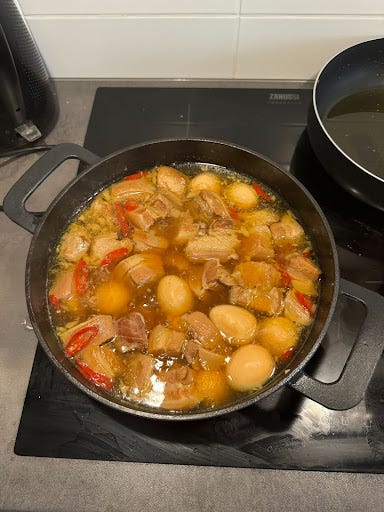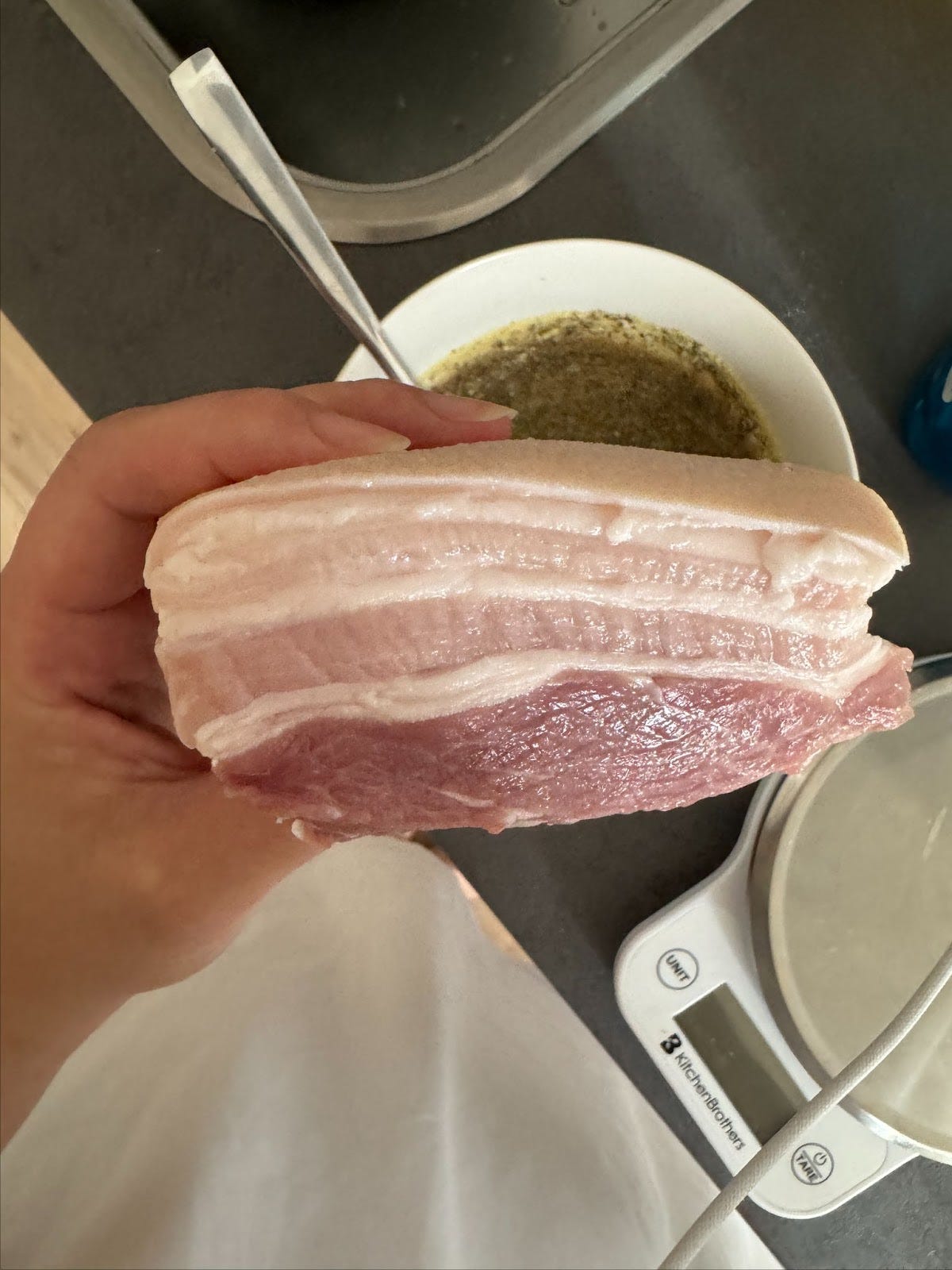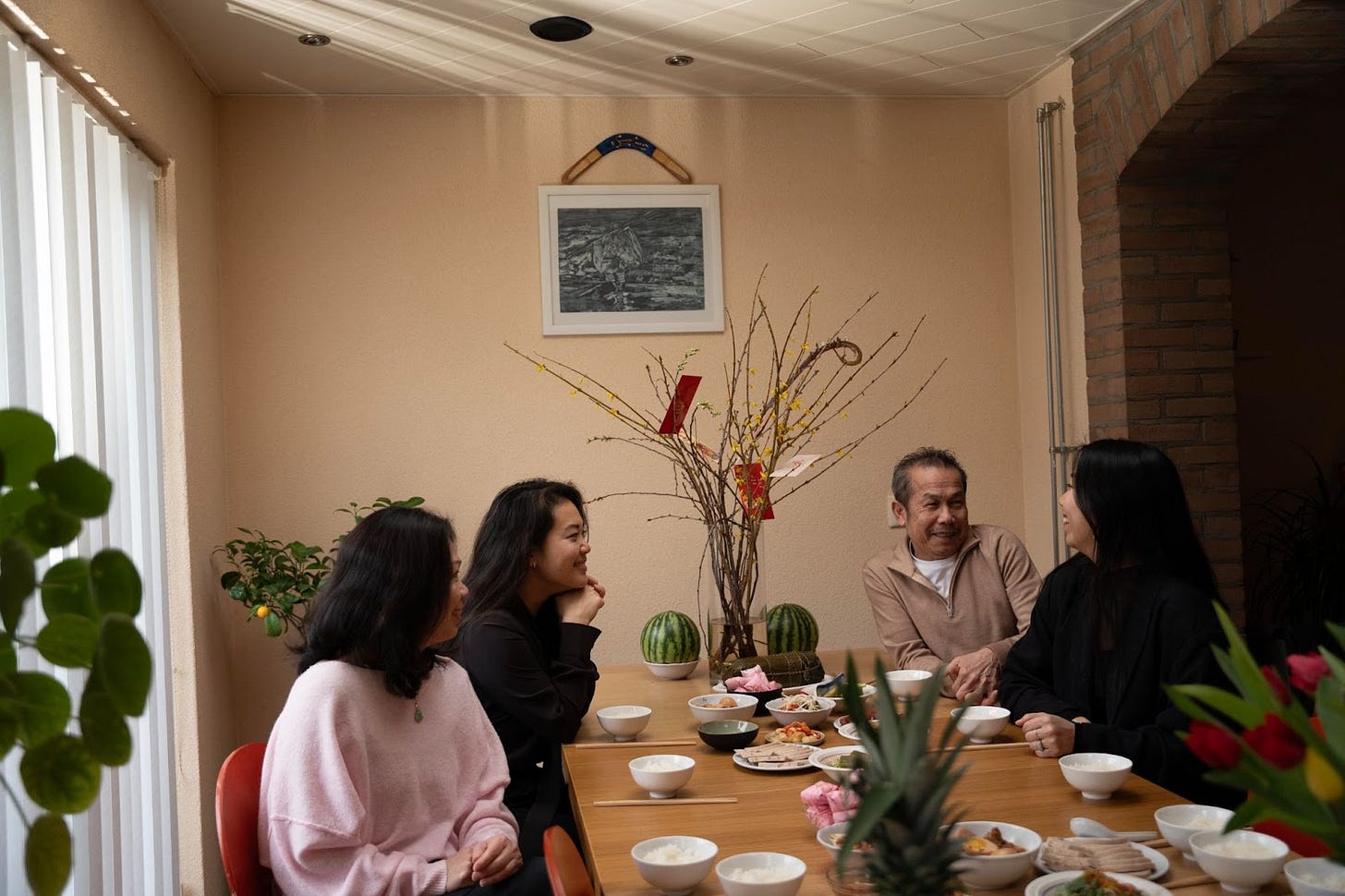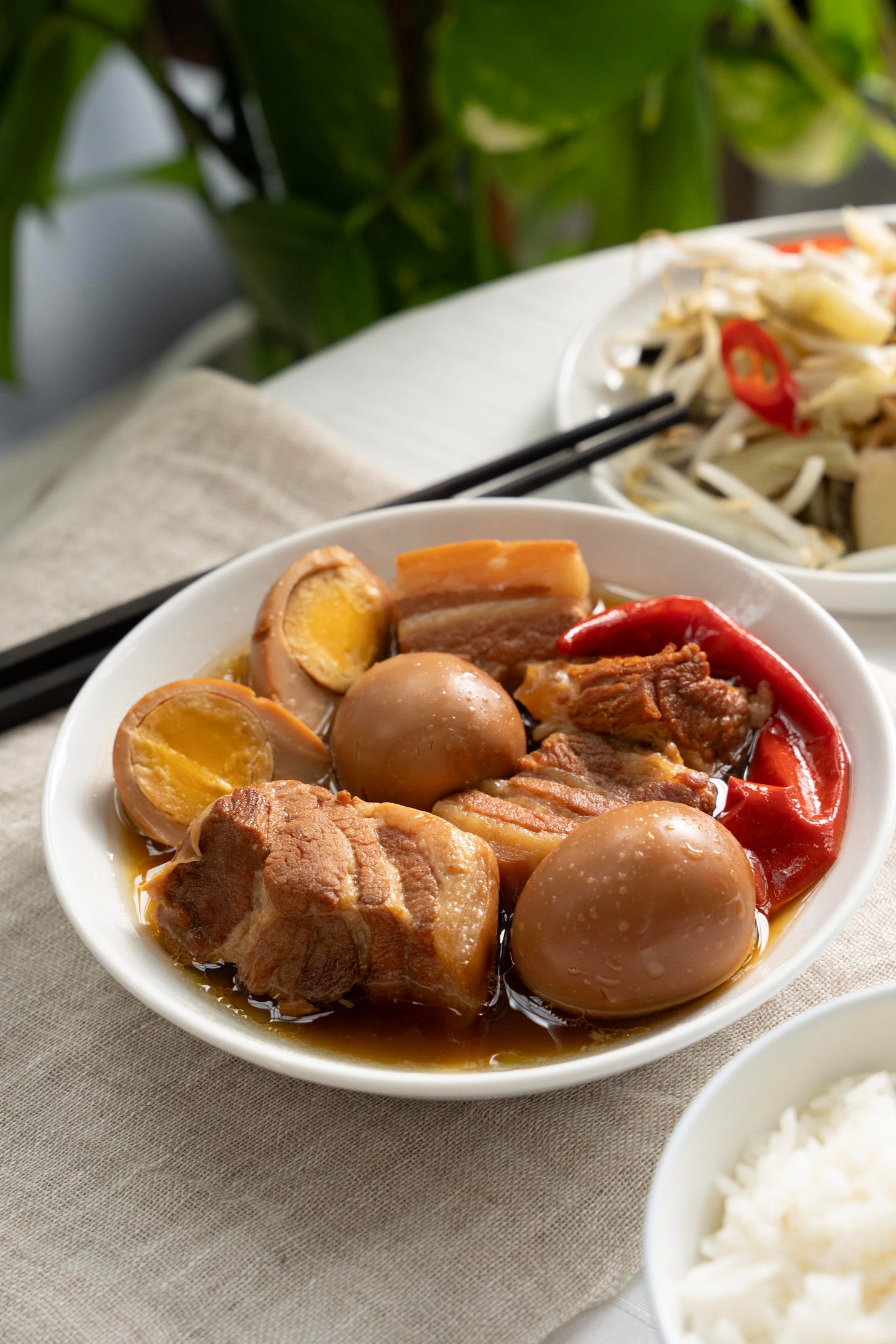✨ Welcome to Singapore Noodles, a newsletter dedicated to celebrating Asian culinary traditions and food cultures. Every Monday, you’ll be receiving a tasty mix of food history, stories, and recipes straight in your inbox. This week, Phi-Yen Phan, a graphic designer and illustrator from the Netherlands of Vietnamese descent, shares a recipe for thịt kho trứng, or braised pork belly. This newsletter is 100% reader-funded; if you’re enjoying the read in your inbox each week, then please subscribe below — each paid subscription supports the writing and research that goes into the newsletter, pays guest writers, and gives you access to all content and recipes. Thank you for being here and enjoy this week’s newsletter! - Pamelia✨
Thịt kho trứng
by Phi-Yen Phan / @phi.yenphan
When I think of thịt kho trứng, I think of my family and the act of coming together. This is a comforting, richly flavoured Vietnamese braise of tender pork belly and hard-boiled eggs simmered in coconut water and fish sauce. The dish is notably prepared on Vietnamese New Year, or Tết Nguyên Đán, the biggest holiday in Vietnam where millions travel back to their hometowns to celebrate the new year with family and friends. Preparations often begin in advance: houses are cleaned and decorated, rituals are performed to honour ancestors, and there is extensive cooking in anticipation of the feasting to come. The dish embodies the warmth and traditions of Vietnamese home cooking and, back when I did not know how to cook it, I looked forward to coming home around Tết as it meant that I could finally eat thịt kho trứng.
My parents were both born in the South of Vietnam. My mother comes from the city of Saigon, while my father grew up in a small village near the Mekong Delta. They moved to the Netherlands for a better life and, when they first arrived, it was not easy to find Vietnamese ingredients — they had to make do with what they could find locally. My father had his family send seeds to him so that he could grow his own plants. Thankfully, there are some dishes in the Vietnamese repertoire, such as thịt kho trứng, that use everyday ingredients. Being a braise, thịt kho trứng also keeps wonderfully, making it a perfect large-batch meal in our household. My parents worked a lot when I was younger and, to ensure that we had delicious and warm meals throughout the week, my father would prepare a big pot of thịt kho trứng on weekends. The best part was that it tasted better with each additional day of rest.
Selecting and cleaning the pork
I always get pork belly from the butcher as, in the Netherlands, it's quite challenging to find a nice whole piece of pork belly at the supermarket. I’ll typically select a piece that has an almost equal ratio of fat to meat, because the layers of fat, when braised, is the best part of the dish to me. That said, any pork belly slab with its skin on will work. My parents believe that it is essential to clean the pork thoroughly to remove any off-odours, so that the flavours of the meat and braising liquid can sing clearer. To do this, they pepper little tricks throughout the cooking process. First, the pork is rubbed with a generous amount of salt before it is rinsed well. It is then blanched to pull any scum and impurities to the surface. Finally, a dash of vodka is added to the pan. According to my parents, it sanitises the surface of the meat and can make it a little more tender. In the absence of vodka, rice wine or sake will also work.
Braising
Many traditional thịt kho trứng recipes employ a simple caramel technique: one melts sugar in a pot until it transforms into a richly brown caramel, then water is added to create a caramel sauce before adding the pork. This creates a deep, complex base for the braising liquid and gives the dish its characteristic golden brown colour. My parents use a different method. In our household, we braise the pork directly in coconut water and allow the liquid to gradually reduce. We are partial to coconut water from the brand Foco, which can be recognised by the green coconut and green lines on its packaging. It has a natural aroma instead of the “fake coconut” smell that plagues other brands. This method is simple and yet is able to yield a thịt kho trứng that is naturally sweet, deliciously rich, and beautifully coloured.
The hard-boiled eggs, alongside the pork, is a highlight of the dish, and much care is taken to present them pristine. We boil them thoroughly, as this allows the shells to separate easily, before gingerly peeling them to avoid damaging the egg whites. These are added to the pot, and the longer the eggs braise, the more flavour that will be absorbed. We usually know when the dish is ready when the braising liquid is a rich golden-brown colour and the eggs are evenly tan; this usually takes several hours.


The pork belly and eggs are served alongside steamed white rice, with a bit of the savoury sauce drizzled over everything. On the side, we would have pickled mustard greens with bean sprouts, or dưa giá, which acts as a refreshing foil for the sweet, fatty pork belly. If you don’t want to make this from scratch, you can simply purchase pickled mustard greens at Asian grocery stores, usually in the preserved vegetables section. You’ll find recipes for both the thịt kho trứng and the dưa giá below. My father is known for this dish among our family and friends — each time he makes it, we’ll expect extra guests at the table. It’s a dish that brings people together, and a family closer.
Phi-Yen Phan is a graphic designer and illustrator from Rotterdam, born and raised in Oss in the Netherlands. She recently published her Vietnamese cookbook, Ăn Cơm, which she wrote together with her parents. A big lover of food, she incorporates it into her artwork.
Thịt kho trứng
Makes 4 to 6 servings








